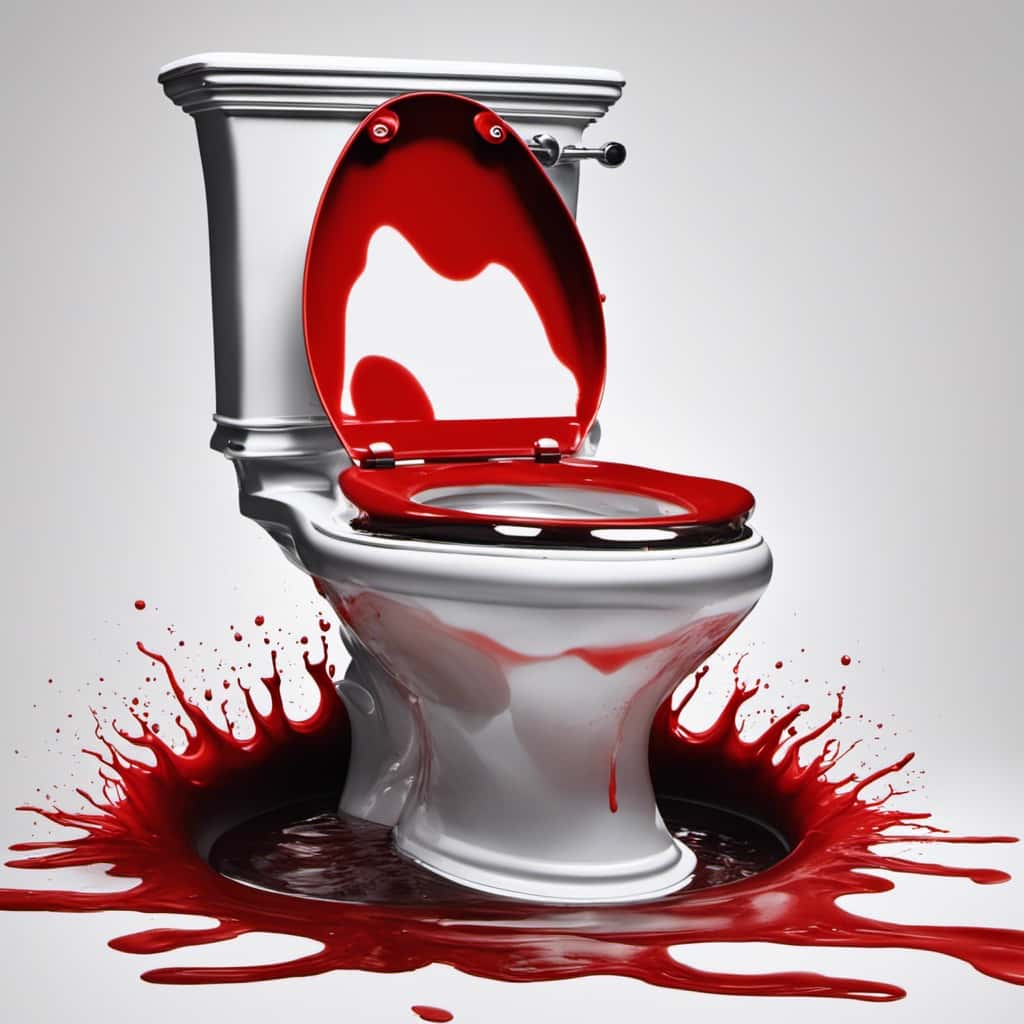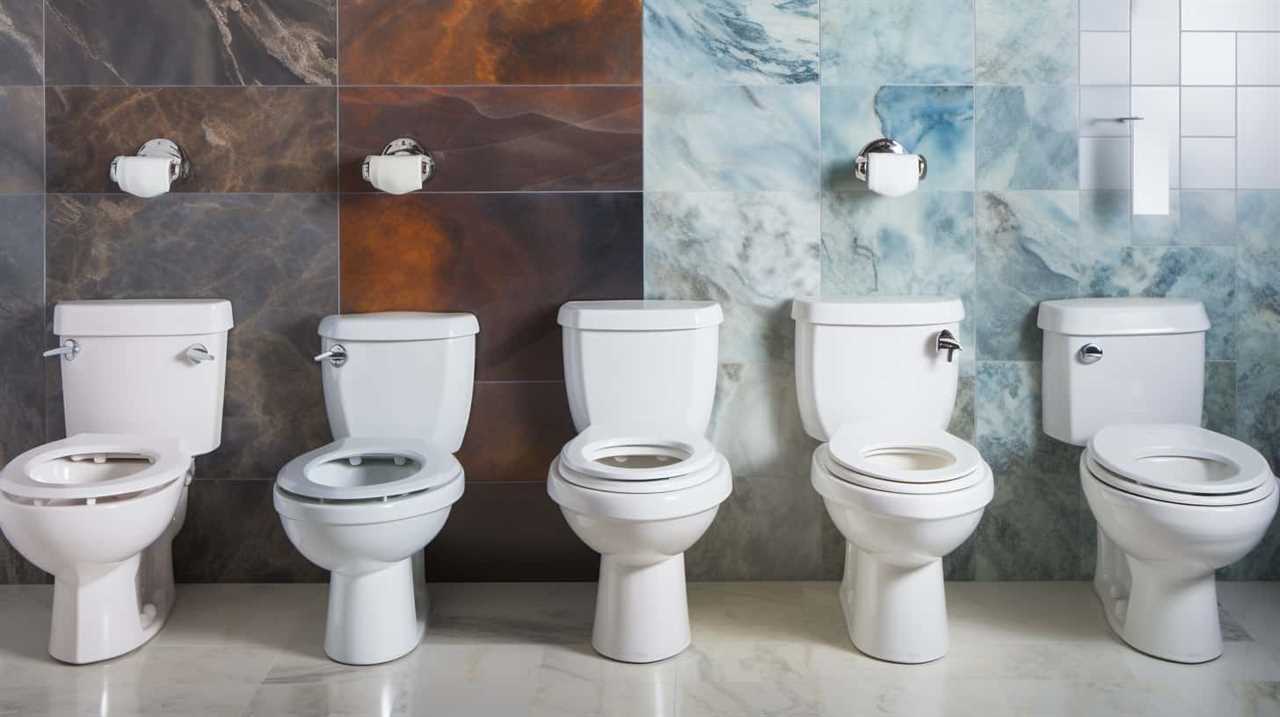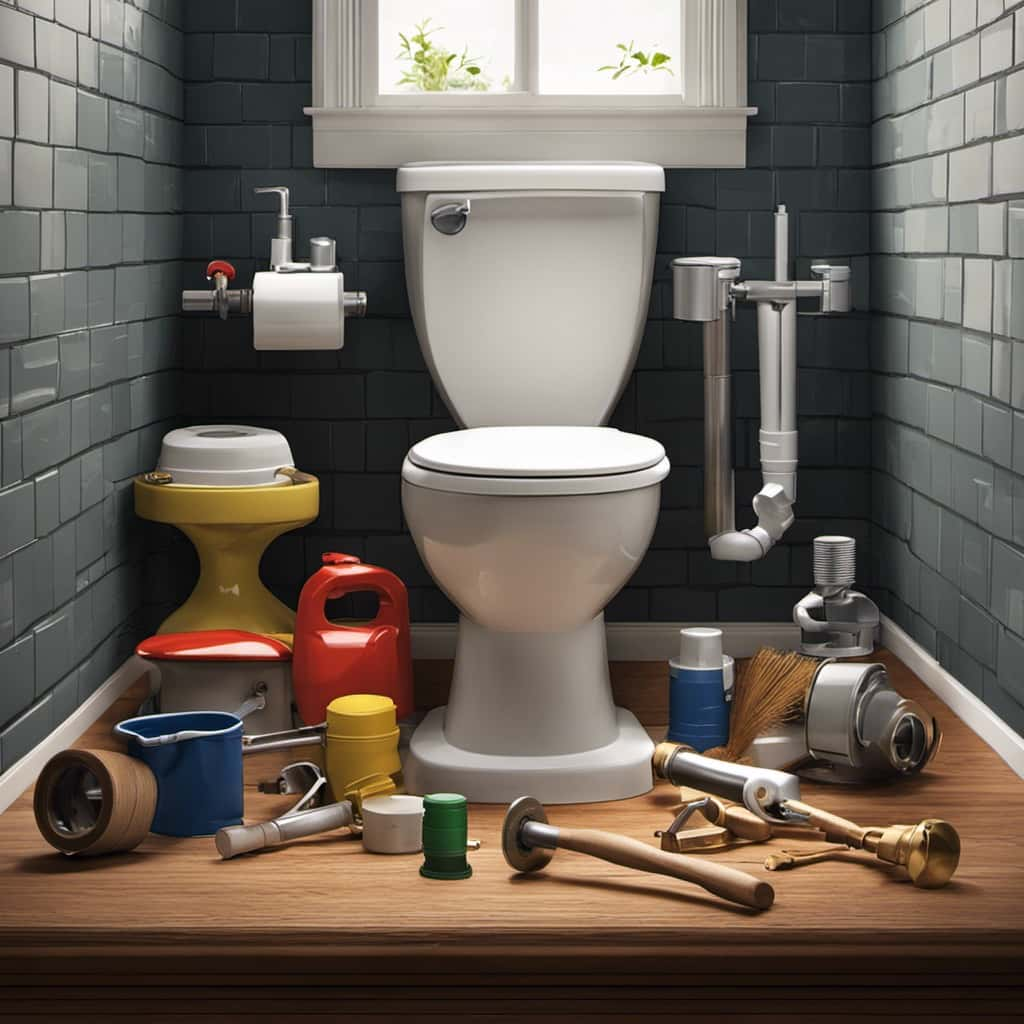We’ve all been there – tossing a napkin into the toilet without a second thought.
But is it really okay? In this article, we’ll explore the environmental impact, plumbing and sewer issues, and potential health risks associated with flushing napkins.
We’ll also discuss alternatives to flushing and provide best practices for disposing of napkins.
So, if you want to master the proper way to handle napkins and protect our planet, keep reading.

Key Takeaways
- Flushing napkins down the toilet contributes to water pollution and harms aquatic life.
- It can lead to clogging in pipes and damage the plumbing system over time.
- Flushing napkins introduces pathogens into the water system and increases the risk of waterborne diseases.
- Composting napkins or using reusable cloth alternatives are environmentally friendly solutions to reduce waste.
Environmental Impact
The environmental impact of flushing napkins down the toilet is significant. When napkins are flushed, they contribute to water pollution and pose challenges for waste management systems. Napkins are made of materials that don’t break down easily in water, such as paper and synthetic fibers.
As a result, they can clog pipes and cause blockages in sewage systems, leading to costly repairs and maintenance. Moreover, the presence of napkins in wastewater can contaminate water bodies, harming aquatic life and ecosystems.
To mitigate these issues, it’s crucial to educate the public about proper waste disposal methods, such as using designated bins for napkins and other non-flushable items. Implementing effective waste management strategies and raising awareness about the potential consequences of flushing napkins can help reduce water pollution and ensure the sustainability of our environment.
Plumbing and Sewer Issues
How can flushing napkins down the toilet impact our plumbing and sewer systems?

Flushing napkins down the toilet can lead to a range of plumbing and sewer issues. One of the most common problems is clogging. Napkins aren’t designed to dissolve in water like toilet paper, so they can easily cause blockages in the pipes. This can lead to backups, slow drains, and even sewage overflow.
Additionally, the materials used in napkins, such as plastic or synthetic fibers, can also cause damage to the plumbing system over time.
To avoid these issues, regular plumbing maintenance is essential. This includes avoiding flushing non-flushable items and ensuring that the toilet is working properly. By taking these precautions, you can prevent common toilet problems and keep your plumbing system in good condition.
Understanding the potential impact of flushing napkins down the toilet is crucial, not only for plumbing maintenance but also for avoiding potential health risks.

Potential Health Risks
Flushing napkins down the toilet can pose significant potential health risks for both individuals and the community. It’s important to be aware of the contamination concerns and public health implications associated with this practice.
Here are three key points to consider:
- Spread of pathogens: Napkins are often used to wipe away bodily fluids, such as blood or mucus. Flushing these contaminated napkins can introduce pathogens into the water system, increasing the risk of waterborne diseases.
- Blockages and backups: Flushing napkins down the toilet can lead to plumbing blockages and backups. This can result in untreated sewage overflowing into homes, streets, or even water sources, creating a breeding ground for harmful bacteria and viruses.
- Environmental impact: Napkins that are flushed down the toilet may end up in rivers, lakes, or oceans, contributing to water pollution. This pollution can harm aquatic life and disrupt ecosystems, further impacting public health.
It is crucial to dispose of napkins in the appropriate manner to minimize these potential health risks and protect both ourselves and the environment.
Alternatives to Flushing Napkins
We can explore alternative methods for disposing of napkins instead of flushing them down the toilet. When it comes to napkin disposal, there are two main options to consider: composting and using reusable cloth alternatives.

Composting provides an environmentally friendly solution by allowing napkins to break down naturally and become nutrient-rich soil. To compost napkins, it’s important to ensure that they’re made of biodegradable materials and free from any harsh chemicals.
On the other hand, reusable cloth alternatives offer a sustainable option that reduces waste. Instead of throwing away napkins after each use, cloth alternatives can be washed and reused multiple times, saving both money and resources.
Best Practices for Disposing of Napkins
To properly dispose of napkins, it’s important to follow best practices that promote sustainability and prevent potential plumbing issues. Here are three recommended methods for disposing of napkins:
- Composting napkins: Napkins made of biodegradable materials, such as unbleached paper or organic cotton, can be safely composted. Before composting, make sure to remove any non-compostable elements, such as plastic packaging or metal clips.
- Recycling napkins: Some napkins, especially those made of paper, can be recycled. Check with your local recycling facility to determine if they accept napkins and follow their guidelines for proper recycling. Remember to remove any food residues before recycling.
- Landfill disposal: If composting or recycling options aren’t available in your area, napkins can be disposed of in the regular trash. However, try to minimize waste by using reusable cloth napkins whenever possible.
Frequently Asked Questions
What Are Some Common Materials Used to Make Napkins?
Common materials used to make napkins include cotton, linen, and paper. However, it is important to consider alternatives to disposable napkins, such as reusable cloth napkins, to reduce waste and protect the environment.

How Long Does It Take for Napkins to Decompose in a Landfill?
In a landfill, napkins can take several months to decompose, depending on factors like moisture and temperature. Proper napkin disposal methods, such as composting, can significantly reduce their environmental impact.
Can Napkins Be Recycled?
Recycling options for napkins are limited due to their low value as a material. However, it is important to note that flushing napkins down the toilet is not recommended, as it can cause clogs and have a negative environmental impact.
Are There Any Regulations in Place Regarding the Disposal of Napkins?
There are regulations on napkin disposal to minimize environmental impact. We learned this the hard way when our plumbing got clogged from flushing napkins. It’s important to dispose of them properly in designated bins.
Are There Any Specific Types of Napkins That Are Safe to Flush Down the Toilet?
Safe napkins to flush down the toilet are those specifically labeled as biodegradable and septic-safe. However, it’s important to consider the environmental impact. It’s recommended to dispose of napkins in a waste bin instead.

Conclusion
In conclusion, it isn’t okay to flush napkins down the toilet due to the significant environmental impact, potential plumbing and sewer issues, and potential health risks it poses.
While some may argue that flushing napkins is convenient, it’s important to consider the long-term consequences on our environment and infrastructure.
Instead, we should opt for proper disposal methods such as using designated trash bins or composting options, ensuring a cleaner and healthier environment for all.










